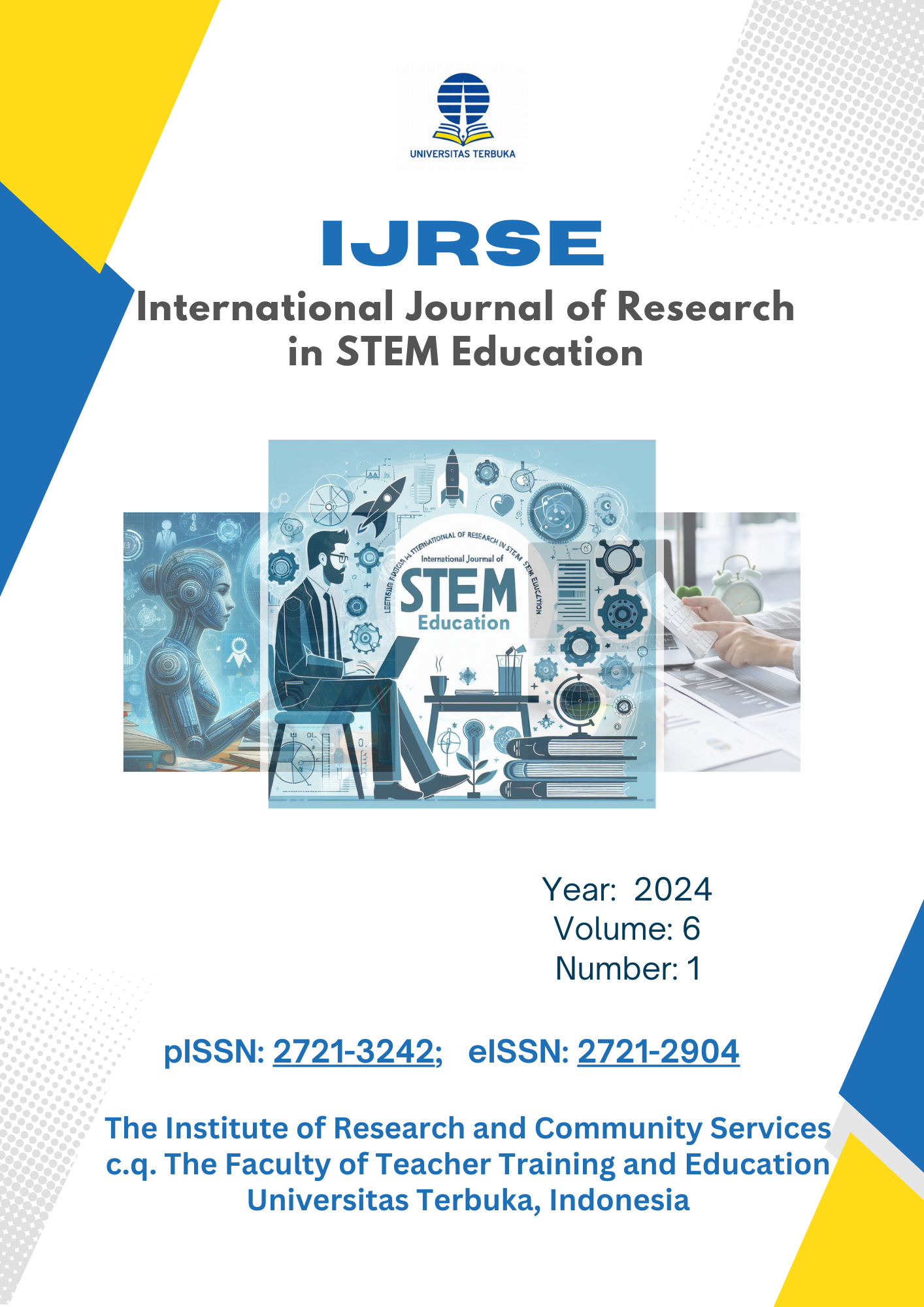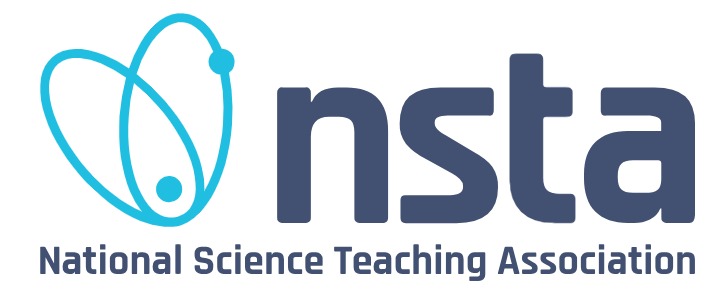Unveiling the Power of Educational Mathematics Applications as Formative Assessment Tools: A Multiple Case Study
DOI:
https://doi.org/10.33830/ijrse.v6i1.1657Keywords:
case study, Symbolab application, Photomath application, CalculusAbstract
This study explored the experiences of the second-year students of Bukidnon State University on their utilization of Symbolab and Photomath applications as formative assessment tools in their calculus studies. This study utilized the data source triangulation method in collecting data based on interviews, observation of interaction, and document analysis (Carter, Bryant-Lukosius, DiCenso, Blythe & Neville, 2014). The data were collected through face-to-face and virtual interviews using a semi-structured interview guide. Thematic analysis was utilized for data analysis. Findings revealed four (4) themes: (1) Learning Support in Mathematics, (2) Ethical Use of Math Applications, (3) User-Friendly Math Application Features, and (4) Accessibility and Inclusivity of Math Applications. This study recommends that students and teachers are urged to actively utilize these two (2) applications to enrich their learning experiences and expertise in calculus respectively.
References
Abidin, Z., & Hunter, R. (2017). Student Engagement with Technology Use in Mathematics Education: An Indonesian Secondary School Context Student Engagement with Technology Use in Mathematics Education: An Indonesian Secondary School Context. In Twenty-First Pacific Asia Conference on Information Systems. https://doi.org/10.4324 /9781351189392-7.
Academic Success Center (2023). Independent Samples t-test. National University. https://resources.nu.edu/statsresources/IndependentSamples
Afrizal, A. (2015). Application-Based Interactive Mathematics Learning Multimedia Elementary School Education Level Class I. Journal of Informatics Engineering Polytechnic Sekayu 3(2), 12. https://doi.org/10.34306/itsdi.v6i2.684
Ahmad, S. N., Mahadi, S., Yusri, M. Y., Yusop, H., Ali, M. N., & Heng, C. H. (2017). Factors related to students' performance in Calculus. Journal of Applied Environmental and Biological Sciences, 7(6), 51-56. https://bit.ly/3zRytbm
Ahmad, S. N., Mahadi, S., Yusri, M. Y., Yusop, H., Ali, M. N., & Heng, C. H. (2017). Factors related to students' performance in Calculus. Journal of Applied Environmental and Biological Sciences, 7(6), 51-56. https://bit.ly/3M95bMK
Andrews, T., Dyson, L., & Wishart, J. (2015). Advancing ethics frameworks and scenario-based learning to support educational research into mobile learning. International Journal of Research & Methods in Education, 38(3), 320-334. https://bit.ly/48ueTkOl https://bit.ly/3vn7PIj
Anggraini, Y., & Sunaryantiningsih, I. (2019). Differences in learning outcomes using the Symbolab application with conventional methods for electrical engineering students. JMPM: Journal of Mathematics and Mathematics Education, 4(1), 29-38. https://doi.org/10.26594/jmpm.v3i2.1252
Aranzo, R., Damicog, M., Macahito, C., Reyes, A. Tancio, K., & Luzano, J. (2023). A Case Analysis of the Strategies of Students in Learning Mathematics amidst Academic Disruption. International Journal of Multidisciplinary Approach and Studies, 10(2), 1-15. https://sl.ut.ac.id/A-Case-Analysis-of-the-Strategies
Arsyad, & Azhar. (2006). Instructional Media. Depok: PT Raja Grafindo Homeland. https://sl.ut.ac.id/instructional-media
Bitter, G. G., & Corral, A. (2015). Analysis of learning outcomes from mobile mathematics applications. International Journal for Innovation Education and Research, 3(3), 177-190. https://bit.ly/3zYE1Ba
Blackstone, S. B., & Hopkin, V. D. (2002). Influence of user interface aesthetics on information retrieval from memory. Proceedings of the CHI 2002 Conference on Human Factors in Computing Systems, 305-310. https://sl.ut.ac.id/Influence-of-user-interface-aesthetics
Blood, E. (2010). Effects of Student's Response Systems on Participation and Learning of Students with Emotional and Behavioral Disorders (p. pp. 214-228) [PDF]. https://doi.org/10.1177/019874291003500303
Brew, E. A., Nketiah, B., & Koranteng, R. (2021). A Literature Review of Academic Performance, an Insight into Factors and their Influences on Academic Outcomes of Students at Senior High Schools. Open Access Library Journal, 8, 1-14. https://doi.org/10.4236/oalib.1107423
Burn, H., & Mesa, V. (2015). The Calculus I curriculum. Insights and recommendations from the MAA national study of college calculus, 45-57. https://bit.ly/416dqxG
Cai, S., Liu, E., Yang, Y., & Liang, J. (2019). Tablet-based AR technology: Impacts on students' conceptions and approaches to learning mathematics according to their self-efficacy. British Journal of Educational Technology, 50(1), 248–263. https://doi:10.1111/b jet.12718.
Capuno, R., Necesario, R., Etcuban, J. O., Espina, R., Padillo, G., & Manguilimotan, R. (2019). Attitudes, Study Habits, and Academic Performance of Junior High School Students in Mathematics. International Electronic Journal of Mathematics Education, 14(3), 547-561. https://eric.ed.gov/?id=EJ1227082
Caudill, J. G. (2007). The growth of m-learning and the growth of mobile computing: Parallel developments. The International Review of Research in Open and Distributed Learning, 8(2). https://doi.org/10.19173/irrodl.v8i2.348
Coimbra, M. T., Cardoso, T., & Mateus, A. (2015). Augmented Reality: unreality: for Higher Education Students in Mathematics's Learning? Procedia - Procedia Computer Science, 67, 332–339. https://doi.org/10.1016/j.procs.2015.09.277.
Dawes, J. (2008). Do data characteristics change according to the number of scale points used? An experiment using 5-point, 7-point and 10-point scales. International journal of market research, 50(1), 61-104. https://doi.org/10.1177/147078530805000106
Drigas, A., & Pappas, M. (2015). A Review of Mobile Learning Applications for Mathematics. https://bit.ly/3GH5dI4
Figueiredo, M. (2014). Teaching Mathematics with Augmented Reality. Framework for 21st Century Learning - P21. (n.d.). Retrieved March 23, 2018, from http://www.p21.org/our-work/p21-framework
Figueiredo, M., Godejord, B., & Rodrigues, J. (2016). The development of an interactive mathematics app for mobile learning. In 12th International Conference Mobile Learning (pp. 75-81). IADIS press. https://files.eric.ed.gov/fulltext/ED571452.pdf
Gilmore, C. (2018). The Role of Executive Function Skills in the Development of Children's Mathematical Competencies. Heterogeneity of Function in Numerical Cognition, Academic Press, 14(263-286). https://doi.org/10.1016/B978-0-12-811529-9.00014-5
Gledhill et al., (2017). Mathematics Self-Concept and Challenges of Learners in an Online Learning Environment during COVID-19 pandemic. https://bit.ly/41bd5tK
Gliner, J. A., Morgan, G. A., & Leech, N. L. (2009). Research methods in applied settings: An integrated approach to design and analysis (2nd ed.). Routledge. https://doi.org/10.4324/9781315723082
Guinocor, (2020). Mathematics Performance of Students in a Philippine State University. International Electronic Journal of Mathematics Education, 15(3). https://doi.org/10.29333/iejme/7859
Guri-Rosenblit, S. 2009. Digital technologies in higher education: Sweeping expectations and actual effects. New York: Nova Science. https://sl.ut.ac.id/digital_technologies_in_higher_education
Guri-Rosenblit, S. and Gros, B. 2011. E-learning: Confusing terminology, research gaps and inherent challenges, Journal of Distance Education, 25 (1). Available at: Higher Education Funding Council for England 2009. Enhancing learning and teaching through the use of technology: A revised approach to HEFCE's strategy for e-learning. Bristol: Higher Education Funding Council for England. Accessed October 23, 2023. http://www.hefce.ac.uk/pubs/hefce/2009/09_12/09_12.pdf
Hackman, D. G. (2004). Constructivism and block scheduling: Making the connection. Phi Delta Kappan, 85(9): 697-702. https://doi.org/10.1177/003172170408500911
Haleem, A., Javaid, M., Qadri, M. A., & Suman, R. (2022). Understanding the role of digital technologies in education: A review. Sustainable Operations and Computers. https://doi.org/10.1016/j.susoc.2022.05.004
Hassenzahl, M. (2008). User experience (UX) research: A guide for designing usable and enjoyable products and services. Morgan Kaufmann. https://outset.ai/resources/learn/ux-research
Hurdle, Z. B., Akbuga, E., & Schrader, P. (2022). Exploring Calculus, I students' performance between varying course times among other predictive variables. International Electronic Journal of Mathematics Education, 17(4), em0700. https://doi.org/10.29333/iejme/12234
Jebb, A. T., Ng, V., & Tay, L. (2021). A review of key Likert scale development advances: 1995–2019. Frontiers in psychology, 12, 637547. https://doi.org/10.3389/fpsyg.2021.637547
Johnson et al., (2016). The Effects of Mobile Applications in Teaching High School Mathematics. https://bit.ly/3MIBrqv
Kaput, J., Hegedus, S., & Lesh, R. (2020). Technology is becoming infrastructure in mathematics education. In Foundations for the future in mathematics education (pp. 173-191). Routledge. https://bit.ly/3o3D4oc
Khaddage, F., Lattemann, C., & Bray, E. (2011). Mobile app integration for teaching and learning. (Are Teachers Ready to Re-blend?). In Society for Information Technology & Teacher Education International Conference (pp. 2545-2552). Association for the Advancement of Computing in Education (AACE). Retrieved in January 2018 from https://goo.gl/Vek2vo
Le, T., Dang, N. A., Nguyen, K., & Le, B. N. (2023). AiMA - An AI-Based Mobile System to Assist College Students with Math-Related Issues. VNUHCM Journal of Science and Technology Development, 26(3), 2863-2875. https://doi.org/https://doi.org/10.32508/stdj.v26i3.4104
Liu, B., Kong, D., Cen, L., Gong, N. Z., Jin, H., & Xiong, H. (2015, February). Personalized mobile app recommendation: Reconciling app functionality and user privacy preferences. In Proceedings of the eighth ACM international conference on web search and data mining (pp. 315-324). https://doi.org/10.1145/2684822.2685322
Luzano, J. F. (2020). Development and Validation of Strategic Intervention Materials (SIMs) of the Selected Topics in Trigonometry of Precalculus Discipline in Senior High School. Journal of Mathematics and Statistical Studies, 1(2), 26–37. https://doi.org/10.69569/jip.2024.0466
Luzano, J. (2023). The Interplay of Conceptual Understanding and Problem-Solving Competence in Mathematics. International Journal of Multidisciplinary Approaches and Studies, 10(2), 89-97. https://sl.ut.ac.id/The-Interplay-of-Conceptual-Understanding
Makhdum, F. N., Sandhu, H. R., Batool, T., Khan, S., Faisal, F., & Younas, A. (2023). Effect Of Using Symbolab Calculator in Teaching Simultaneous Equations on Students' Conceptual Understanding at The Elementary Level in Pakistan: Mathematics Attitude in Technological Corners. Journal of Positive School Psychology, 117-124. https://bit.ly/405RXUg
Makhdum, F. N., Sandhu, H. R., Batool, T., Khan, S., Faisal, F., & Younas, A. (2023). Effect Of Using Symbolab Calculator In Teaching Simultaneous Equations On Students' Conceptual Understanding At The Elementary Level In Pakistan: Mathematics Attitude In Technological Corners. Journal of Positive School Psychology, 117-124. https://journalppw.com/index.php/jpsp/article/view/15022
Manthra Prathoshni, S., Vishnu Priya, V., & Gayathri, R. (2018). Effect of teaching aids on student's academic performance in professional courses. Drug Invention Today, 10(12). http://bit.ly/489xJxV

Downloads
Published
How to Cite
Issue
Section
License
Copyright (c) 2024 Jay Fie Paler Luzano, Jayson G. Nallada, Daniel Russ B. Hulagpos, John Rey C. Damasco

This work is licensed under a Creative Commons Attribution-NonCommercial 4.0 International License.
Content Licensing, Copyright, and Permissions
1. License
International Journal of Research in STEM Education (IJRSE) adopts the Creative Commons Attribution-NonCommercial 4.0 International License (CC BY-NC 4.0) as the optimal license for the publication, distribution, use, and reuse of scholarly works for non-commercial purposes.
The non-commercial use of the article will be governed by this license, which allows others to share and adapt the work provided proper attribution is given to the author(s) and the journal.
Creative Commons Attribution-NonCommercial 4.0 International License.
Creative Commons License: CC BY-NC 4.0
2. Author's Warranties
The author warrants that the article is original, written by the stated author(s), has not been published before, contains no unlawful statements, does not infringe the rights of others, is subject to copyright vested exclusively in the author, is free of any third-party rights, and that all necessary written permissions to quote from other sources have been obtained by the author(s).
3. User Rights
The International Journal of Research in STEM Education aims to disseminate published articles as freely as possible. Under the Creative Commons license, users are permitted to copy, distribute, display, and perform the work for non-commercial purposes only, provided that proper attribution is given to the author(s) and this journal.
4. Rights of Authors
Authors retain the following rights:
- Copyright and proprietary rights related to the article, such as patent rights.
- The right to use the substance of the article in future works (e.g., lectures, books).
- The right to reproduce the article for personal purposes.
- The right to self-archive the article.
- The right to enter into separate, additional non-exclusive contractual arrangements for the distribution of the article’s published version (e.g., posting to an institutional repository or publishing it in a book), with acknowledgment of its initial publication in IJRSE.
If the author has a non-exclusive publishing contract with another publisher under a more restrictive license, the author still retains all rights to republish or distribute the work elsewhere, including commercially, as the author is not bound by the license conditions imposed on the journal.
5. Co-Authorship
If the article has multiple authors, the signatory of this agreement warrants that he/she has been authorized by all co-authors to sign this agreement on their behalf and agrees to inform all co-authors of the terms of this agreement.
6. Termination
This agreement may be terminated by either the author or IJRSE with two months’ notice if the other party has materially breached this agreement and failed to remedy such breach within one month after receiving written notice.
No breach or violation of this agreement will cause automatic termination or affect the license granted to IJRSE.
7. Royalties
This agreement entitles the author to no royalties or other fees. To the extent legally permissible, the author waives the right to collect royalties in respect of any use of the article by IJRSE or its sublicensees.
8. Miscellaneous
IJRSE will publish the article (or have it published) once the editorial process has been successfully completed.
The journal reserves the right to edit the article for style, punctuation, spelling, capitalization, referencing, and consistency as deemed appropriate.
The author acknowledges that the article will be made publicly accessible, and such access will be free of charge for readers.







